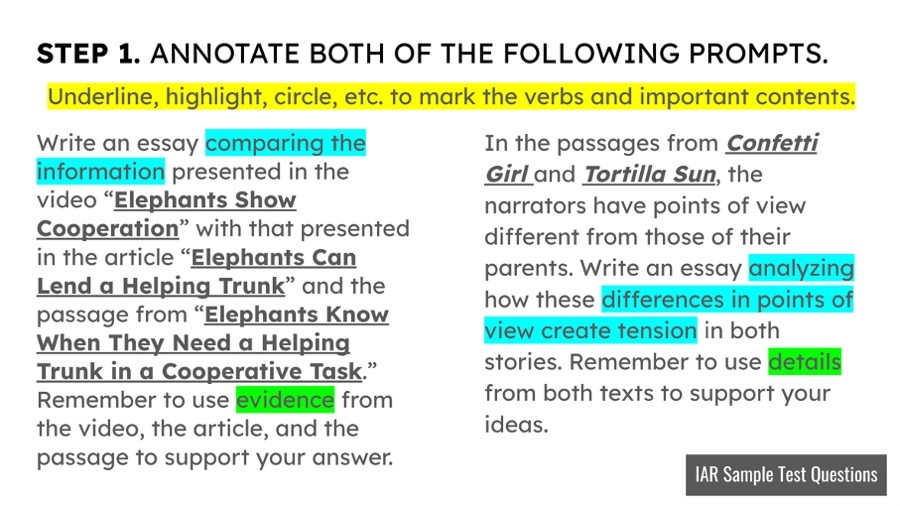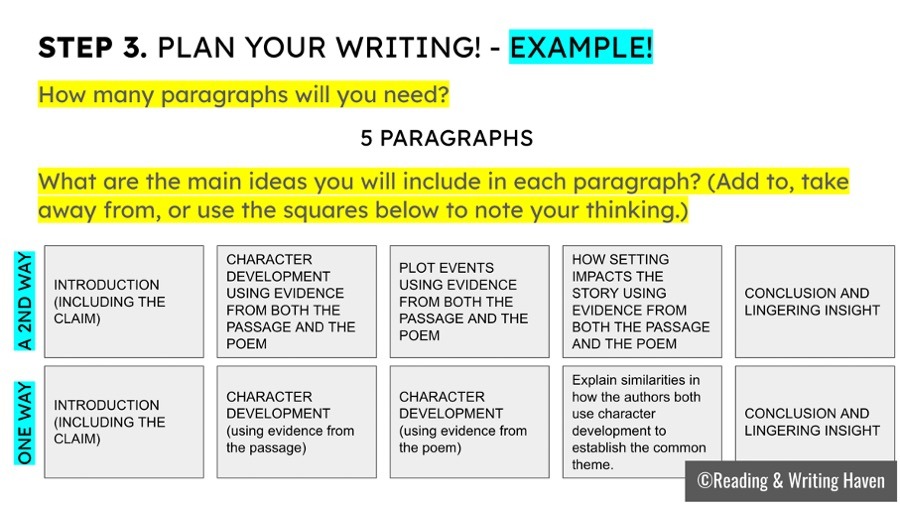How to Tackle Test Prep Writing Prompts in 3 Easy Steps
Does it ever seem like standardized test writing prompts are intentionally wordy and confusing? If you have stumbled upon this post after finishing your testing for the year, enjoy! For the rest of us, I have a simple process to help students break down those test prep writing prompts into something manageable.
While these ideas are great for focused prep before an assessment, they are also valuable to begin teaching students from Day 1. Start training students to think through this process early and often, and it will become part of their natural approach come test time.
Before diving into the steps, you’ll need writing prompts that mirror those your students will see. I recommend pulling sample or released writing prompts from the testing site for your state. The prompts you see in this post are from practice tests on the IAR website.
Once you have the prompts, you’re ready to dive in. So, here are my 3 steps. Try these with students!
STEP 1: ANNOTATE
First, I recommend teaching students how to annotate the prompt. Get rid of the fluff so they can focus on what they need to include in their response.
With test prep writing, I stick with the keep it simple theme by having them identify the verb and target (like analyze the differing points of view or compare the information presented).
Then, they count the number of texts the prompt requires them to write about (generally 2 to 3). Often, the wording of the prompt itself is so convoluted that students miss the number of texts they are asked to synthesize.
Finally, students highlight the word “details” or “evidence” as a reminder that they need to include paraphrased and word-for-word information from the text to support their ideas.
STEP 2: PROCESS
Once students have uncovered the most important information, ask them to tell you what the test prep writing prompt is asking them to do. When doing so, it’s important they use their own words. This can be conversational or in writing. I like to sit with small groups of students to chat about their thinking, but when short on time, I’ve also had this discussion as a whole class.
After practicing this skill, students will develop a habit. After we teach them how to think, they’ll start doing it independently and internally.
If your students need it, provide scaffolding to begin this work. For instance, give them a sentence frame. Keep in mind that you will probably need to model how to use it. Here’s an example:
I need to write ____________ that shows I understand the ________________ of ___(#)___ texts. I will need to write about ___________. In order to do this, I will need to __(analyze, compare, etc.)__ the _________(what kind of evidence?)________.
STEP 3: BRAINSTORM
Students are now ready to plan their writing! This is usually a step that is missed during timed tests. Students feel so ready to be done or so crunched by time that they don’t take a moment to organize their thinking. Show them how doing so will make a big difference in their end product!
You can give students a digital or print organizer, or even a blank piece of paper. Have them come up with at least one (if not multiple) options for organizing their response.
How many paragraphs will they need?
What’s the main idea they will include in each?
The best part is considering the variety of responses that would work when students share their ideas.
With students, take a look at the released rubric for scoring essays on your standardized test. Which approach would help students be the most successful?
After this lesson, make sure to talk with students about how planning takes about five minutes, but will result in a more organized, clear, and knowledgable response. They will be less likely to ramble and more likely to answer the question effectively.
If time allows, use this approach over the course of a couple weeks, a month, or even throughout the year to demonstrate how to annotate prompts of all types. I hope these ideas will help your students feel more confident when tackling those tricky writing questions!
READ NEXT:
RELATED RESOURCE:
The writing process is critical to students’ success for all occasions! If you’re looking for a way to introduce, review, or reinforce the writing process, you may enjoy this engaging digital activity.





